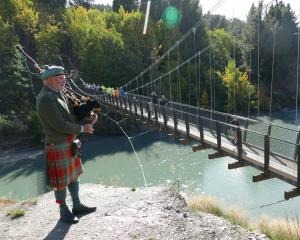
Nati, a 10-year-old male, pictured with Sophie Olsson-Pons, wildlife keeper from Kiwi Birdlife Park in Queenstown, arrived in the resort last week from Orana Wildlife Park in Christchurch, as part of a breed-for-release programme.
His new mate, Tawahi, is one of the park's mature females. Her previous mate, Tamanui, was released into the wild last year as he was not incubating eggs.
Wildlife manager Paul Kavanagh said incubating eggs artificially from day one, without the kiwi doing any of the incubation, drastically reduced the chance of getting the chick through to hatching.
It is hoped Tawahi and Nati will be settled in time for the breeding season at the end of winter. The park would keep any chicks for at least six months before releasing them into the wild.
"The problem is that only 5% of chicks are surviving to be adults in the wild, because of introduced mammal predators like stoats, ferrets, cats and dogs. By keeping the chicks safe for at least six months, we can increase their chances of survival from 5% to 65%.''
Kiwi Birdlife Park, which is funded by donations and admission fees, focuses on the North Island brown kiwi. Mr Kavanagh said its numbers were no longer declining.
"There's a long way to go but the future is starting to look bright for kiwi conservation.''












